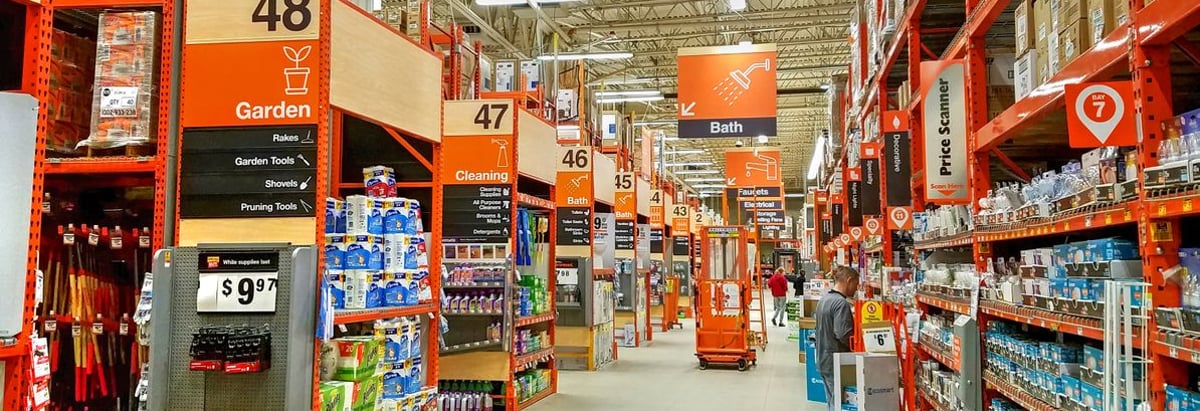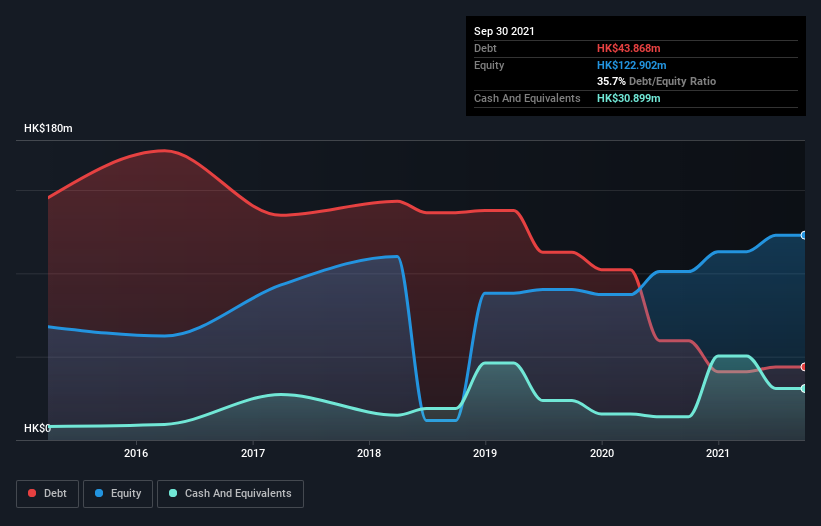
Legendary fund manager Li Lu (who Charlie Munger backed) once said, 'The biggest investment risk is not the volatility of prices, but whether you will suffer a permanent loss of capital.' It's only natural to consider a company's balance sheet when you examine how risky it is, since debt is often involved when a business collapses. We can see that MOS House Group Limited (HKG:1653) does use debt in its business. But the real question is whether this debt is making the company risky.
When Is Debt A Problem?
Debt is a tool to help businesses grow, but if a business is incapable of paying off its lenders, then it exists at their mercy. In the worst case scenario, a company can go bankrupt if it cannot pay its creditors. However, a more common (but still painful) scenario is that it has to raise new equity capital at a low price, thus permanently diluting shareholders. Of course, plenty of companies use debt to fund growth, without any negative consequences. The first thing to do when considering how much debt a business uses is to look at its cash and debt together.
See our latest analysis for MOS House Group
How Much Debt Does MOS House Group Carry?
You can click the graphic below for the historical numbers, but it shows that MOS House Group had HK$43.9m of debt in September 2021, down from HK$59.6m, one year before. On the flip side, it has HK$30.9m in cash leading to net debt of about HK$13.0m.

A Look At MOS House Group's Liabilities
The latest balance sheet data shows that MOS House Group had liabilities of HK$107.8m due within a year, and liabilities of HK$15.5m falling due after that. On the other hand, it had cash of HK$30.9m and HK$32.1m worth of receivables due within a year. So its liabilities total HK$60.2m more than the combination of its cash and short-term receivables.
This deficit is considerable relative to its market capitalization of HK$68.4m, so it does suggest shareholders should keep an eye on MOS House Group's use of debt. This suggests shareholders would be heavily diluted if the company needed to shore up its balance sheet in a hurry.
In order to size up a company's debt relative to its earnings, we calculate its net debt divided by its earnings before interest, tax, depreciation, and amortization (EBITDA) and its earnings before interest and tax (EBIT) divided by its interest expense (its interest cover). This way, we consider both the absolute quantum of the debt, as well as the interest rates paid on it.
While MOS House Group's low debt to EBITDA ratio of 0.61 suggests only modest use of debt, the fact that EBIT only covered the interest expense by 6.3 times last year does give us pause. But the interest payments are certainly sufficient to have us thinking about how affordable its debt is. Although MOS House Group made a loss at the EBIT level, last year, it was also good to see that it generated HK$22m in EBIT over the last twelve months. There's no doubt that we learn most about debt from the balance sheet. But it is MOS House Group's earnings that will influence how the balance sheet holds up in the future. So if you're keen to discover more about its earnings, it might be worth checking out this graph of its long term earnings trend.
Finally, a business needs free cash flow to pay off debt; accounting profits just don't cut it. So it is important to check how much of its earnings before interest and tax (EBIT) converts to actual free cash flow. Happily for any shareholders, MOS House Group actually produced more free cash flow than EBIT over the last year. That sort of strong cash generation warms our hearts like a puppy in a bumblebee suit.
Our View
When it comes to the balance sheet, the standout positive for MOS House Group was the fact that it seems able to convert EBIT to free cash flow confidently. But the other factors we noted above weren't so encouraging. For example, its level of total liabilities makes us a little nervous about its debt. Considering this range of data points, we think MOS House Group is in a good position to manage its debt levels. Having said that, the load is sufficiently heavy that we would recommend any shareholders keep a close eye on it. The balance sheet is clearly the area to focus on when you are analysing debt. But ultimately, every company can contain risks that exist outside of the balance sheet. For example MOS House Group has 4 warning signs (and 2 which are a bit unpleasant) we think you should know about.
If, after all that, you're more interested in a fast growing company with a rock-solid balance sheet, then check out our list of net cash growth stocks without delay.
If you're looking to trade MOS House Group, open an account with the lowest-cost platform trusted by professionals, Interactive Brokers.
With clients in over 200 countries and territories, and access to 160 markets, IBKR lets you trade stocks, options, futures, forex, bonds and funds from a single integrated account.
Enjoy no hidden fees, no account minimums, and FX conversion rates as low as 0.03%, far better than what most brokers offer.
Sponsored ContentNew: Manage All Your Stock Portfolios in One Place
We've created the ultimate portfolio companion for stock investors, and it's free.
• Connect an unlimited number of Portfolios and see your total in one currency
• Be alerted to new Warning Signs or Risks via email or mobile
• Track the Fair Value of your stocks
Have feedback on this article? Concerned about the content? Get in touch with us directly. Alternatively, email editorial-team (at) simplywallst.com.
This article by Simply Wall St is general in nature. We provide commentary based on historical data and analyst forecasts only using an unbiased methodology and our articles are not intended to be financial advice. It does not constitute a recommendation to buy or sell any stock, and does not take account of your objectives, or your financial situation. We aim to bring you long-term focused analysis driven by fundamental data. Note that our analysis may not factor in the latest price-sensitive company announcements or qualitative material. Simply Wall St has no position in any stocks mentioned.
About SEHK:1653
MOS House Group
An investment holding company, engages in the trading of tiles and bathroom fixtures in Hong Kong and Macau.
Excellent balance sheet and slightly overvalued.
Market Insights
Community Narratives



